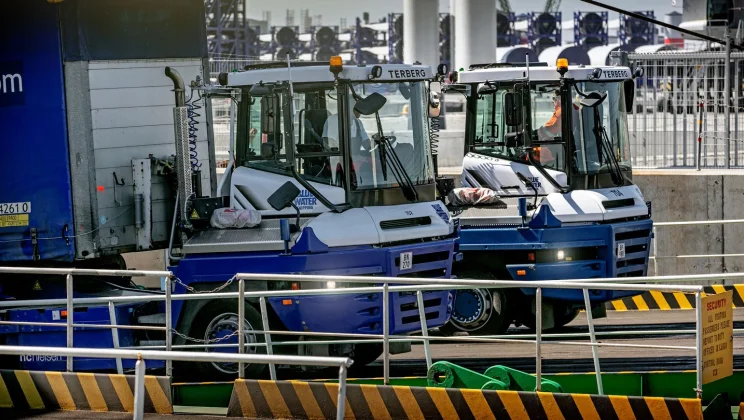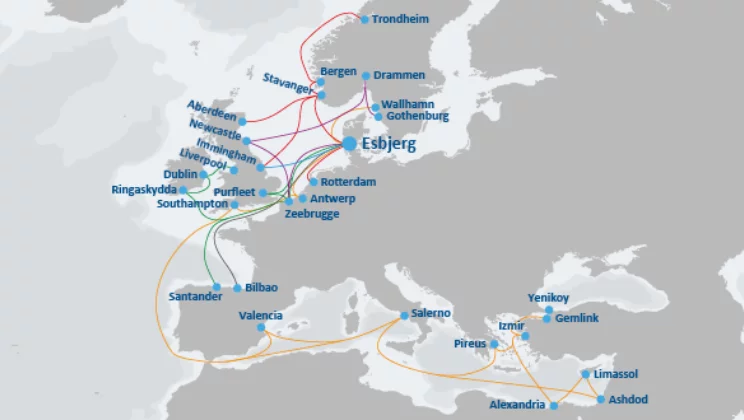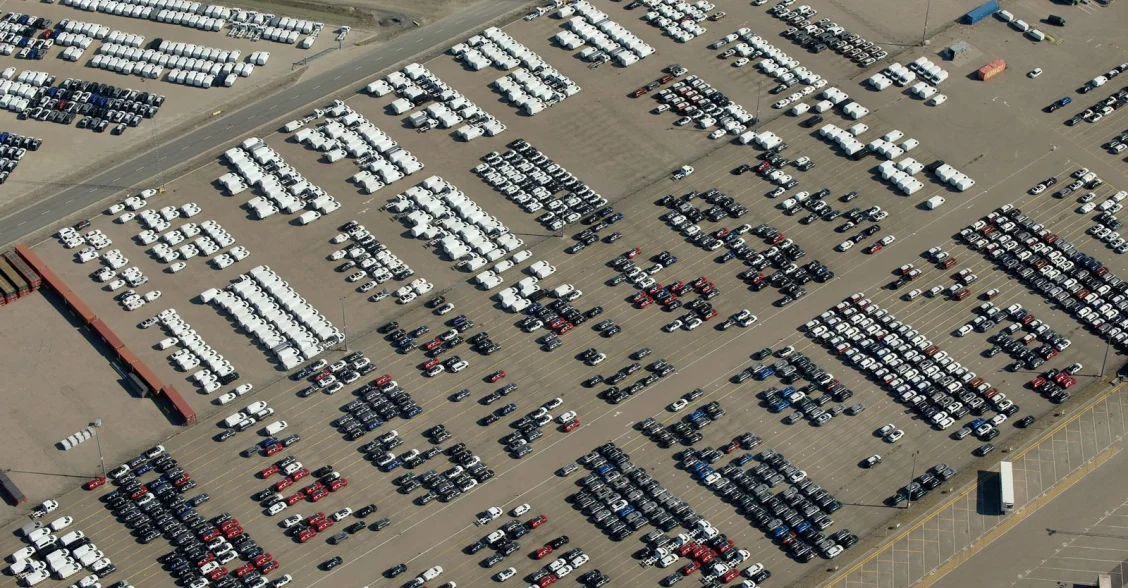European companies need effective port infrastructure. Some of the things needed for this to succeed are close collaboration between European ports and strong RoRo competencies. And with Port Esbjerg joining the Baltic Ports Organization (BPO), this will enable both learning and sharing of expert insights on RoRo.
RoRo is the ‘motorway of the sea’. The rapid loading and unloading of RoRo vessels increase trade and export opportunities. This is precisely the kind of efficient inbound and outbound logistics capabilities that are needed to match and support the growing European industry and to ensure that cargo can move quickly, safely and efficiently on to the world markets.
However, the development of RoRo does not stand still, and more efficient operations locally and closer cooperation across ports are required for easier, faster and greener freight transport.
Our new membership of the Baltic Ports Organization (BPO) provides a strong foundation for collaborating with other ports by defining common standards, sharing knowledge and creating new solutions that strengthen RoRo traffic between the Baltic Sea, the North Sea and the rest of Europe.
“RoRo is an essential part of European trade and enhances the export potential in and between the individual countries. In order to keep up with production around Europe, it’s important that we strengthen our cooperation. This is why we’re pleased to welcome Port Esbjerg whose expertise in RoRo operations can contribute to this development,” says Bogdan Ołdakowski, Secretary General of the BPO.

With eleven RoRo ramps, companies with decades of RoRo experience, and specially trained dock workers, Port Esbjerg ensures the smooth and efficient handling of all types of cargo.
Decades of know-how and optimal framework
For decades, Port Esbjerg has specialised in RoRo transport and has continuously developed its facilities and infrastructure in dialogue with the industry to ensure that the port meets the demand of businesses that want to scale their activities. As a result, European businesses can now move large volumes of cargo quickly and safely through the port.
Eleven RoRo ramps, 24-hour access and direct motorway, rail and airport connections provide an optimal framework for efficient handling of cargo. The RoRo terminals also serve as hubs in the EU Trans-European Transport Network (TEN-T) that links all modes of transport.
The figures reflect committed efforts that have taken place over many years. The expansion of the rail terminal has made it possible to handle more trains, the deepening of the fairway makes it possible to accommodate larger vessels, and the new areas at the port provide for additional storage capacity. All in all, this means that thousands of tonnes of cargo can be transported quickly from A to B – everything from cars and offshore turbine blades to dry bulk.
But infrastructure is not all. The operations around the port terminals are handled by experienced companies with decades of know-how in handling different types of cargo. They are assisted by specially-trained dock workers who make sure that even the most demanding loads are handled appropriately. As a result, loading at Esbjerg may be completed twice as fast as at the average European port.
New collaborative network in the Baltic Sea
Our RoRo expertise is what we bring with us into the BPO. As a member of this organisation, Port Esbjerg is now part of a network counting more than 50 ports and companies in the Baltic Sea region.
“In Port Esbjerg, the BPO has a new member that brings extensive experience in the RoRo field. This experience is what we look forward to being shared with our members. Also, in our organisation and between the individual ports, we can look to optimise operations and strengthen trade corridors,” says Bogdan Ołdakowski, Secretary General of the BPO.
The BPO is an efficient forum for ports and businesses in which cooperation and knowledge-sharing contribute to optimising freight transport across the Continent and strengthening trade corridors between the Baltic Sea and the North Sea.
“As a member of the BPO, Port Esbjerg is now a part of a strong network of ports and businesses in Northern Europe. There’s so much we can learn from the other members – and so much we can offer in return. A strong focus on our part is to further strengthen the trade corridors between the Baltic Sea and the North Sea,” says Dennis Jul Pedersen, CEO of Port Esbjerg.

With 25 shortsea routes to ports across Europe, Port Esbjerg ensures strong connections and supports European export opportunities.
Opportunities on short and long-haul routes
We need infrastructure and efficient operations at ports around Europe to support and drive European export potential, but cooperation initiatives between ports, companies and countries are also needed.
With almost 500 RoRo calls every year, Port Esbjerg is a central base for several leading shipping companies in Europe. Offering 25 shortsea routes to ports across Europe, Port Esbjerg ensures strong connections to many of the largest European ports.
But the potential also extends to other parts of the world.
New arctic routes between Asia and Europe will ensure that cargo can be transported more efficiently between the two parts of the world, while on the other side of the Atlantic, new opportunities for cooperation with North American ports are opening up.
New routes will bring new markets and new opportunities for the businesses at Port Esbjerg.
Go to overview

